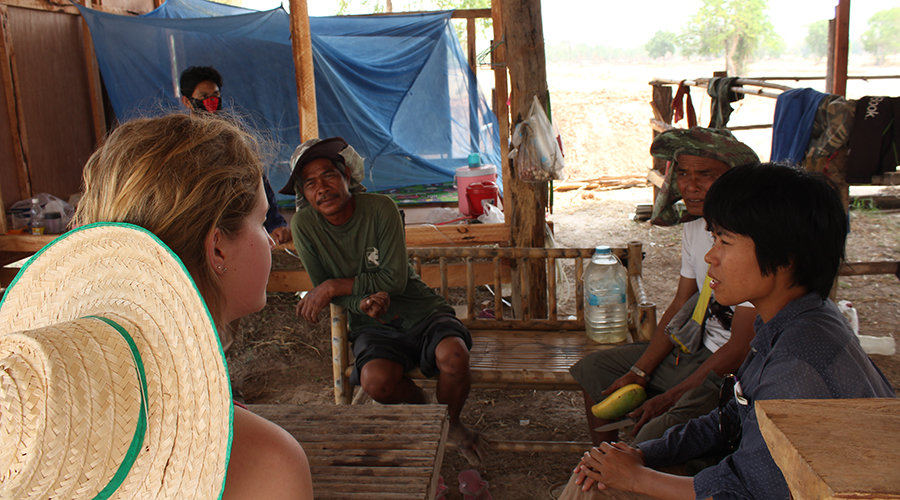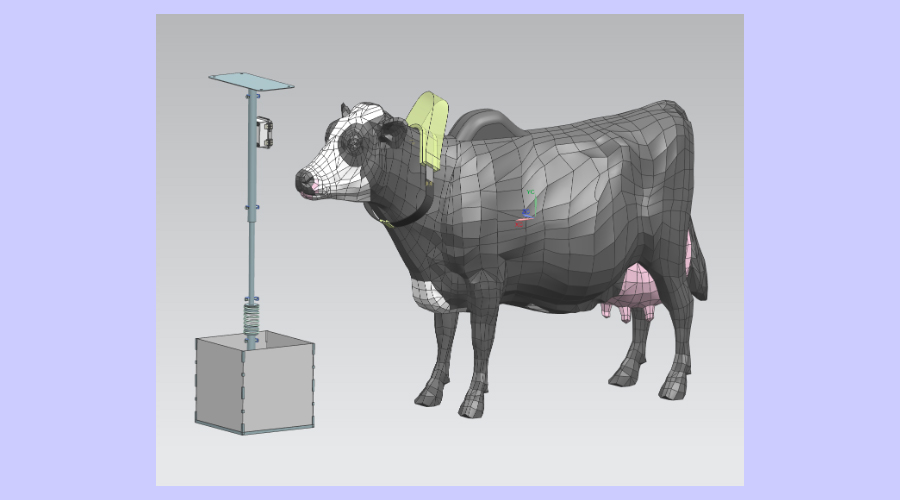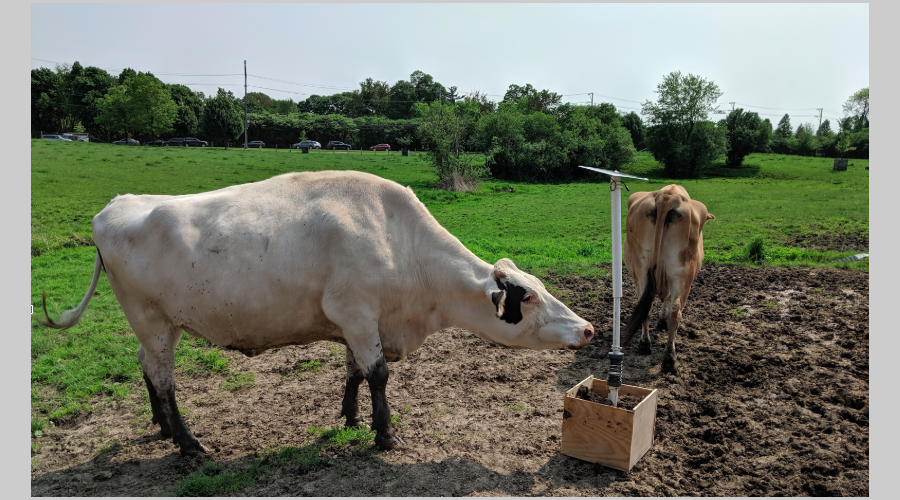CattleTECHAssisting Thai Farmers with Cattle Visibility and Tetherless Grazing
Students in Interdisciplinary Design Projects (DSGN 384) worked with farmers in Thailand to address important problems in local farming: cattle visibility and tetherless grazing.We were solving a problem at a distance with lots of unknowns. Our research in Thailand proved crucial to understanding the problem and our users, and guided us to a design that we could never have arrived at without first-hand experience.
Problem
In Sisaket, Thailand, cow farming is a huge part of local economies. Bryan Hugill, co-founder and owner of the farming cooperative Raitong Organics Farm is working on transitioning from traditional farming into a free-range cell grazing system, which would allow for open grazing of livestock, diversification of crops, and more sustainable upkeep of land. However, it is difficult to ensure the safety and containment of cattle in these designated grazing zones. In addition, the visibility of cows as they are herded—often on busy streets with motorists and cyclists—is imperative for their survival.
Solution
The CattleTECH team developed a dual system of high-visibility collars and a virtual tether post that will allow local farmers to efficiently constrain cattle grazing.
After much trial and error, the team decided on a collar made of lightweight foam sealed in water and UV resistant plastic. The collars were brightly colored and trimmed with reflective fabric and humps that ensured that they would be visible even when looking at a cow head-on.
The second component was more technical. In order to contain the cattle in their grazing areas, the team developed a virtual tether post that farmers can use to either contain or repel grazing cows. Each post uses a radio to transmit signals to the cattle collars. Farmers can easily set boundaries for cattle to stay within a certain grazing area or stay out of areas where crops are growing. These boundaries are communicated to cattle using electronic shocks often used in cattle herding. The posts are designed to be energy efficient—they are powered by a solar panel—as well as easy to move and install. The posts are also built on springs to lessen the impact of curious cows.
Development Process
The team got in touch with Raitong Organics Farm to complete preliminary research on farming customs and lifestyle. They studied the anatomy of the cows, previous attempts at geofencing, and traditions of the farmers in the Sisaket province. Initial design constraints included weather in the area, technological literacy of farmers, cost, and the unique anatomy of cows in the region. Early research into cell grazing pointed the team toward a low cost, easily-constructed tetherless system.
Thanks to financial support from the Norman Design Fund and the Northwestern Institute for Sustainability and Energy Resnick Family Social Impact Fund, the team was able to travel to Thailand to meet with local cattle farmers. They tested prototypes on cattle and visited a local agriculture farm. After returning to Northwestern’s Evanston campus, they tested the radio signal strength for the posts and visited a local cattle farm to do further testing with cows.
Current Status
The CattleTECH team created initial designs for the collars and posts. However, further research needs to be done on the radio signal strength and general durability of the collars and posts. The team hopes they can improve the radio signal, coordinate a system with multiple posts, streamline the collar design and do further research into shock circuits to aid cattle learning in the future.
Faculty Advisers John Anderson, John Lake
ProgramSegal Design Certificate




